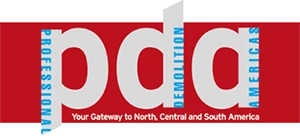Bridge Collapse Gives Rise to Inspirational, Ominous Lessons
Published: 24/7, 2024
“Uh oh.”
That was my thought early on the morning of March 26, when I learned that a large container vessel had collided with the Francis Scott Key Bridge in Baltimore, Md., just a few hours earlier. Details were still sketchy at that point as responders were still assessing the situation, but it was clear from videos already circulating on the Internet that something horrifyingly remarkable had happened.
A little more than two months after the collision, something else remarkable has happened—the stranded vessel and the last of the thousands of tons of steel, concrete, and asphalt it brought down were cleared from the main navigation channel, allowing the Port of Baltimore to resume normal operations. That such an extensive tangled mass of wreckage could be removed so quickly is a credit to the muti-agency response team that brought resources and expertise to bear on the challenge, and the marine salvage companies that got the job done.
Over those two months, those of us who follow stories such as this for professional as well as personal reasons learned a lot about the process of safely and efficiently cutting removing chunks of debris from the site, from using high-tech sonar to map out the piece-by-piece demolition and guide expert divers through the murky waters, to the controlled explosives to make precision cuts to dislodge the 5,000-ton bridge section pinned across the stranded vessel’s bow.
We learned a few other things as details came out—about the heroism of the police who stopped traffic at both ends when alerted to the impending collision, and the helplessness they must have felt when they were unable to alert a construction crew working on the main span.
We also learned something about compassion and respect, as the meticulous demolition and salvage work was carried out in step with the search for four missing construction workers who’d been on the bridge when the collision occurred. At the first sign of any potential, protocols were in place to immediately halt work so that State Police divers could investigate. In the end, the bodies of all four workers were brought home.
And we learned about the vulnerability of other major waterway crossings to similar incidents, and how sure signs of potential failure are sometimes overlooked or, worse, not acted upon for whatever reason (usually money and/or questions of responsibility, but that’s another story).
We’ll be learning more about the Baltimore bridge incident—its causes, consequences, feats of innovation, depths of tragedy, and more—in the coming months and years as multiple government agencies conduct investigations, lawsuits play out, and a new, hopefully more appropriately protected Key Bridge takes shape beginning as early as next year.
The cynic in me doubts that most of these efforts will unfold as collaboratively and with the same sense of mission as the two-month wreckage removal effort. For now, the surviving ends of the Key Bridge serve as a constant reminder of what happened in the dark of that March night, and what people from all backgrounds and experiences did about out in the hours and months that followed.
After all, the next “uh oh” moment can and likely will happen when least expected.
Jim Parsons, Senior Editor
